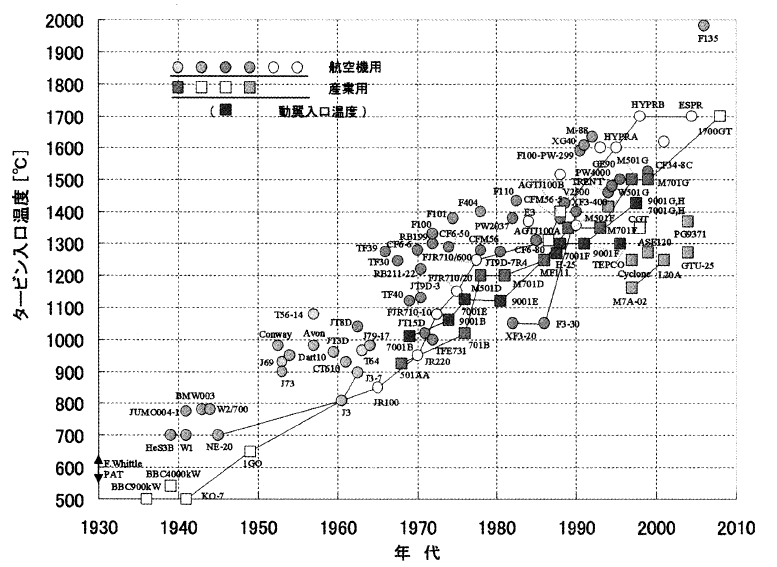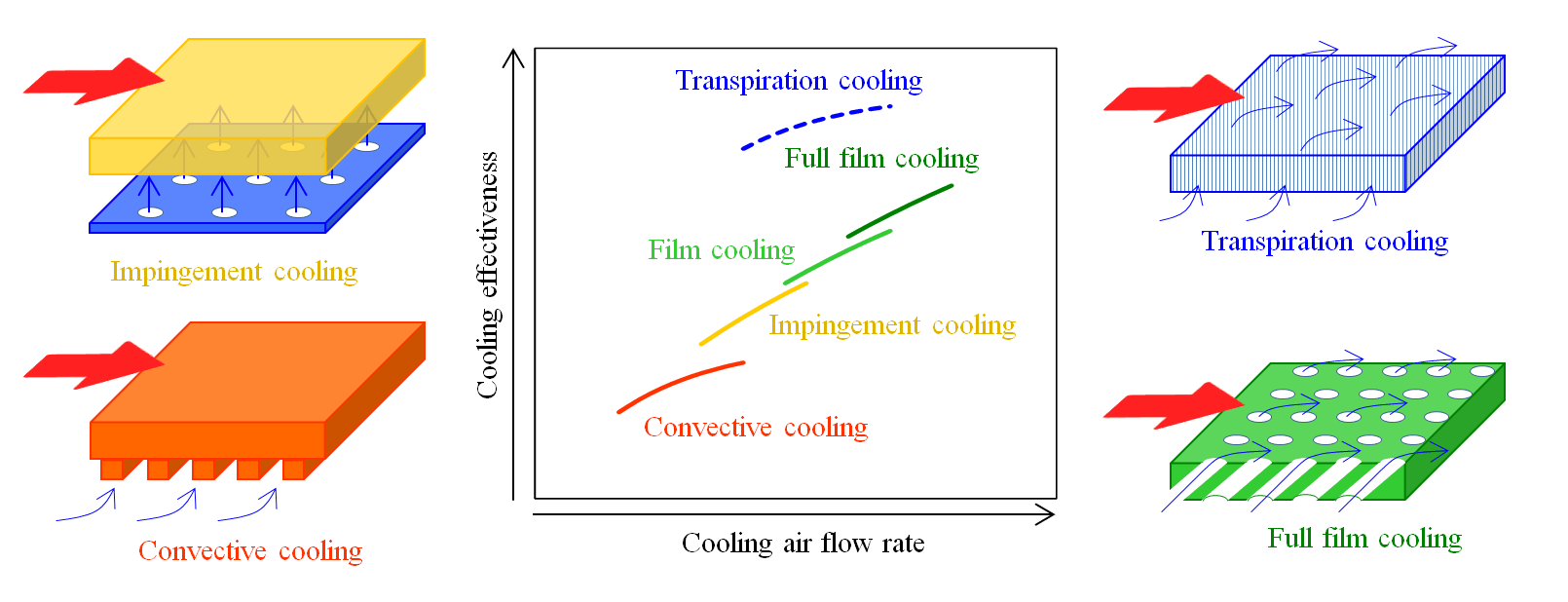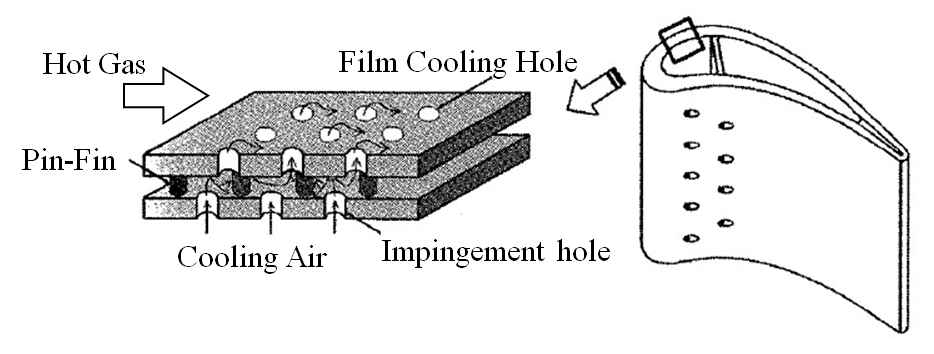Turbine Cooling
In gas turbines such as aviation engines and combined cycles, due to consideration of environmental problems, high efficiency and high performance are strongly required. For that purpose, the operating temperature of gas turbines have increased with improvements in their thermal efficiency. The turbine inlet temperatures (TIT) of gas turbines reach up to 1800 degree Celsius. This increase in TIT is mainly supported by improvement of the heat resistant temperature of materials and progress of cooling technology. Various cooling techniques have been developed with the increase in TIT.(References: Special Issue: The History of Development of Gas Turbines "Turbine" (Heat Transfer), Toyoaki YOSHIDA, Journal of the Gas Turbine Society of Japan, Vol.36 No.2, 2008, pp. 78-83(in Japanese))
Transition of turbine inlet temperature

Comparison of turbine cooling technology

Film Cooling
Cooling air is discharged through small holes in the blade walls. This air provides a thin cooling layer along the external surface of the turbine blade.
Impingement Cooling
Cooling air is perpendicularly impinged from the hole to the inside wall surface.
Pin-Fin Cooling
Pin fins are placed perpendicular to internal cooling air flow path. It plays the role of enlarging the heat transfer area, promoting heat transfer, and maintaining the structural strength.
Serpentine Cooling
In order to reduce the cooling air, serpentine flow path is formed inside the blade to lengthen the cooling flow path.
Integrated Cooling
Combination of film cooling, impingement cooling and pin fin cooling, forming integrated cooling structure aims to greatly improve cooling performance.

Transpiration Cooling
Cooling air passes through a complicated and fine flow path of the porous material and transpires through numerous holes on the surface of blade wall. It has not been put to practical use as turbine cooling.